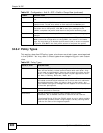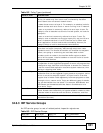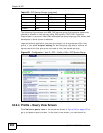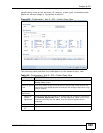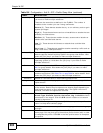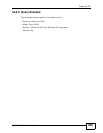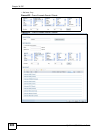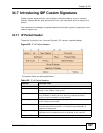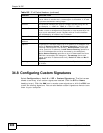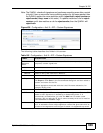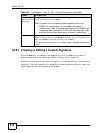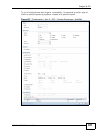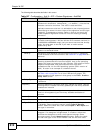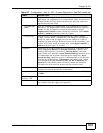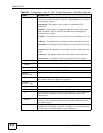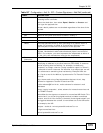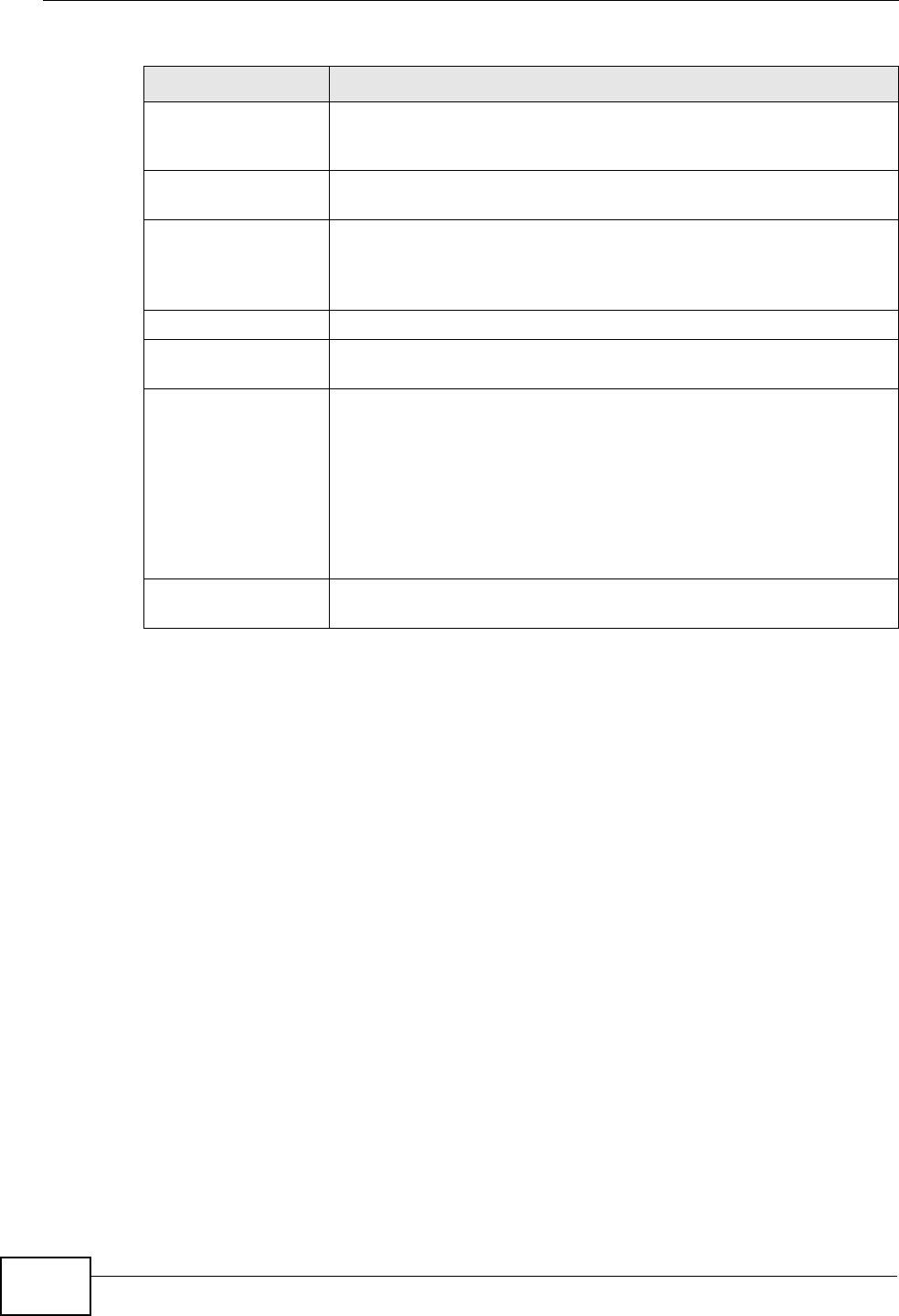
Chapter 34 IDP
ZyWALL USG 300 User’s Guide
608
34.8 Configuring Custom Signatures
Select Configuration > Anti-X > IDP > Custom Signatures. The first screen
shows a summary of all custom signatures created. Click the SID or Name
heading to sort. Click the Add icon to create a new signature or click the Edit icon
to edit an existing signature. You can also delete custom signatures here or save
them to your computer.
Time To Live This is a counter that decrements every time it passes through a
router. When it reaches zero, the datagram is discarded. It is used
to prevent accidental routing loops.
Protocol The protocol indicates the type of transport packet being carried,
for example, 1 = ICMP; 2= IGMP; 6 = TCP; 17= UDP.
Header Checksum This is used to detect processing errors introduced into the packet
inside a router or bridge where the packet is not protected by a link
layer cyclic redundancy check. Packets with an invalid checksum
are discarded by all nodes in an IP network.
Source IP Address This is the IP address of the original sender of the packet.
Destination IP
Address
This is the IP address of the final destination of the packet.
Options IP options is a variable-length list of IP options for a datagram that
define IP Security Option, IP Stream Identifier, (security and
handling restrictions for the military), Record Route (have each
router record its IP address), Loose Source Routing (specifies a
list of IP addresses that must be traversed by the datagram),
Strict Source Routing (specifies a list of IP addresses that must
ONLY be traversed by the datagram), Timestamp (have each
router record its IP address and time), End of IP List and No IP
Options.
Padding Padding is used as a filler to ensure that the IP packet is a multiple
of 32 bits.
Table 165 IP v4 Packet Headers (continued)
HEADER DESCRIPTION



